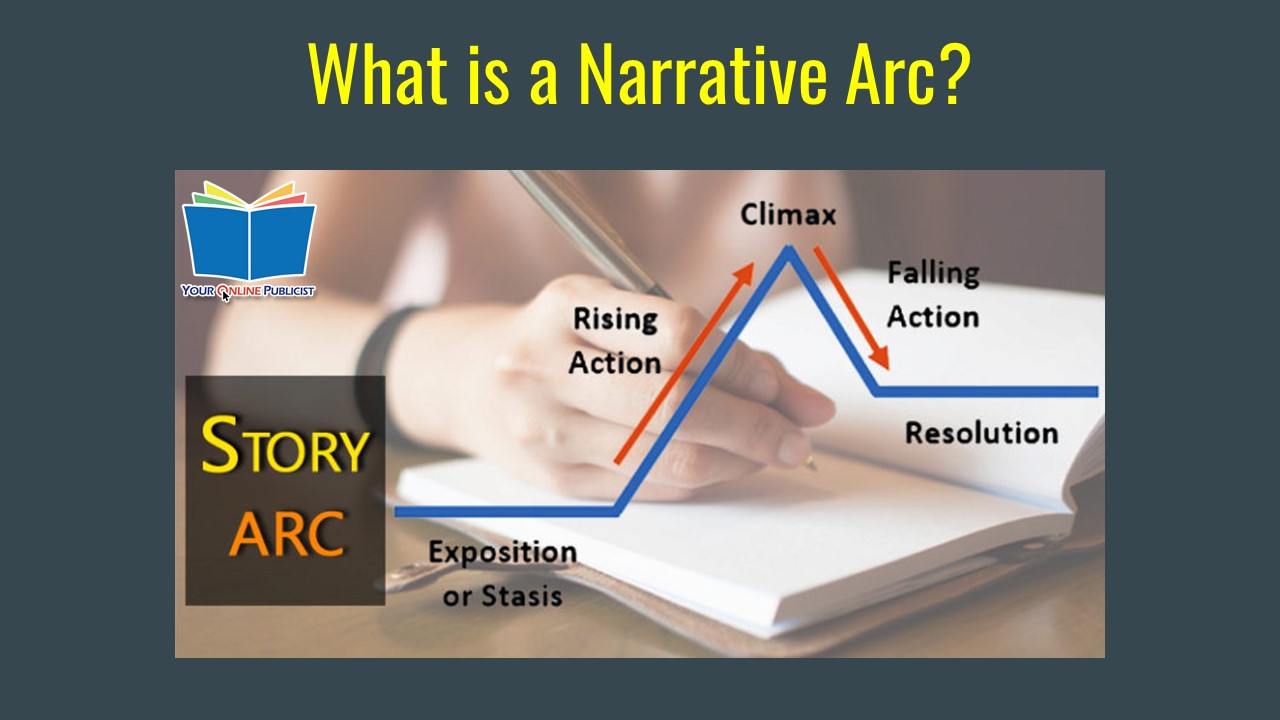What is a Narrative Arc- YOP - PowerPoint PPT Presentation
Title:
What is a Narrative Arc- YOP
Description:
The story arc refers to the shape and structure of a story. Find How narrative arc differ from a plot? What is a Character arc. Five elements of a story arc – PowerPoint PPT presentation
Number of Views:3
Title: What is a Narrative Arc- YOP
1
What is a Narrative Arc?
2
What is a Narrative Arc or Story Arc definition?
- The narrative arc also called the story arc
refers to the shape and structure of a story. It
is universal and pertinent to both fiction and
nonfiction. This arc reflects the events in your
story, the sequence of occurrences in the plot,
and determines the troughs and crests that set
the pace. A good arc is integral if you want to
engage your readers from start to finish. It is
essential to deliver a satisfying conclusion. - The narrative arc is a term that describes a
storys complete progression. It testifies to the
belief that every story has a relatively calm
beginning, a middle where tension, character
conflict, and narrative momentum builds to a
peak, and an end where the conflict is resolved.
3
- It sometimes comes in handy to think about the
story arc as though youre setting up a simple
dramatic play. Evidently, youve got three acts
to tell your story. - In Act One, you set the tone and introduce your
audience to the setting, the characters, and the
seeds of conflict. - In Act Two, your characters grow, respond and
change in accordance with conflicts and
circumstances. They set about trying to resolve
the big puzzle, the seminal idea. Usually, the
conflict escalates to a climax. - In Act Three, characters resolve the Big Problem
and the story concludes.
4
So, how does a Narrative arc differ from a plot?
- Imagine every scene of your novel summarized on
notecards! This entire stack of cards is your
plot, but the order in which you lay them out is
your narrative arc. The plot is comprised of the
individual events that make up your story whereas
your story arc is the sequence of those events.
Carefully sequencing your plot into a cohesive
story arc helps readers navigate through your
story. It sets expectations that you can either
satisfy or disrupt. Thinking about your arc is
integral around the whole point. What if your
Scene-1 notecard actually belongs in the climax?
What if you have too many scenes based on
internal conflict in a row and it derails the
narrative? - The plot is the skeleton of your story and the
narrative arc is its spine. Its the central
through-line that marks the plots progress from
the beginning to the end.
5
What is a character arc then?
- The character arc is to a character what the
narrative arc is to the story. The narrative arc
treads the plot on a grand scale whereas a
character arc charts the inner journey of a
character throughout the plot. Each main and
sometimes secondary character will go through an
individual character arc. While the story arc is
external, the character arc is internal. - Narrative and character arcs are part of a larger
symbiotic relationship. Every plot point in the
story arc aims to bring your characters closer
to, or further from, their goals and desires. The
circumstances and conflicts your characters go
through are part of the arc, but the way
characters meet challenges and as a result,
change, is the character arc territory.
6
Freytags Pyramid The Five Elements of a Story
Arc
- 1. Exposition
- Here, the reader is introduced to the story. The
exposition puts through the background
information to prime the audience for the rest of
the story. It includes the introduction of the
main character-the who, setting-the where, and
the circumstances-the when. - 2. Rising Action
- This is when conflict begins to build up. The
rising action usually begins with an inciting
incident, the triggering point that sets the
main events of the story in motion. This is when
the audience starts to realize what your story is
really about. Here the visual representation
describes the structural elements of the plot.
7
- 3. Climax
- The highest point of tension in your storyline is
the climax. This is often the point at which all
the different subplots and characters converge.
Usually, the climax requires the main character
to face the truth or make an important choice. - 4. Falling Action
- This is the point triggered by the protagonists
decision. In the falling action act, the conflict
gives way to resolution. Loose ends of the story
are tied up, and tension begins to dissipate.
8
5. Resolution
- Resolution is also known as denouement. This is
how the stories are ended. The resolution of a
narrative arc isnt always happy or pleasant. Yet
it does close the loop and show how the events of
the story have transformed the characters and the
world around them. - For a story to create the impact an author wishes
to have, a narrative arc alongside the plot needs
to converge and take the story along. Then comes
the character arc which keeps the readers glued.
And if all the five elements of a story arc are
followed to the T, the author will most often
than not be able to keep it grippy, tight, and
taut.
9
THANK YOU
- Click Here For More Detailed Overview































